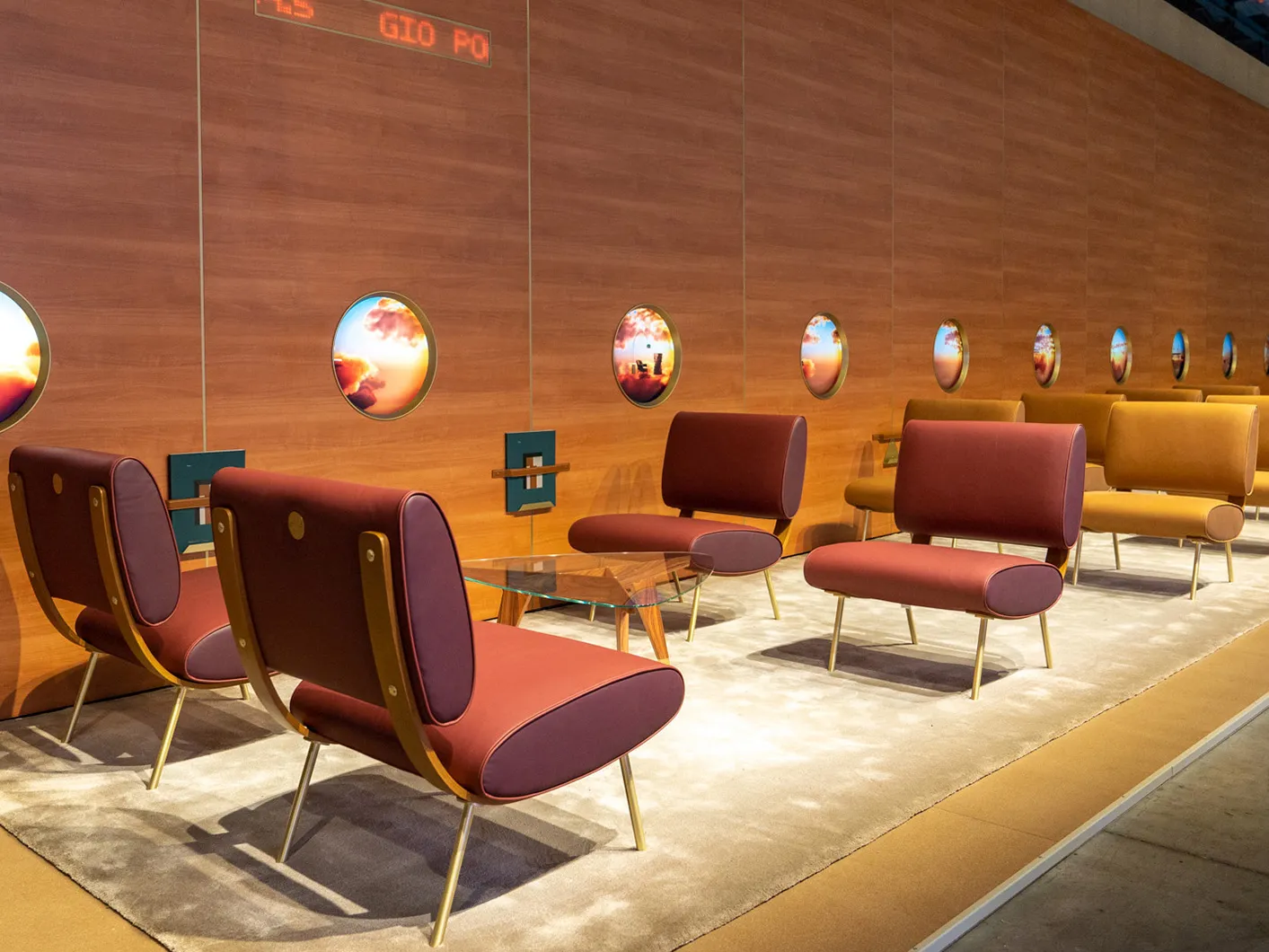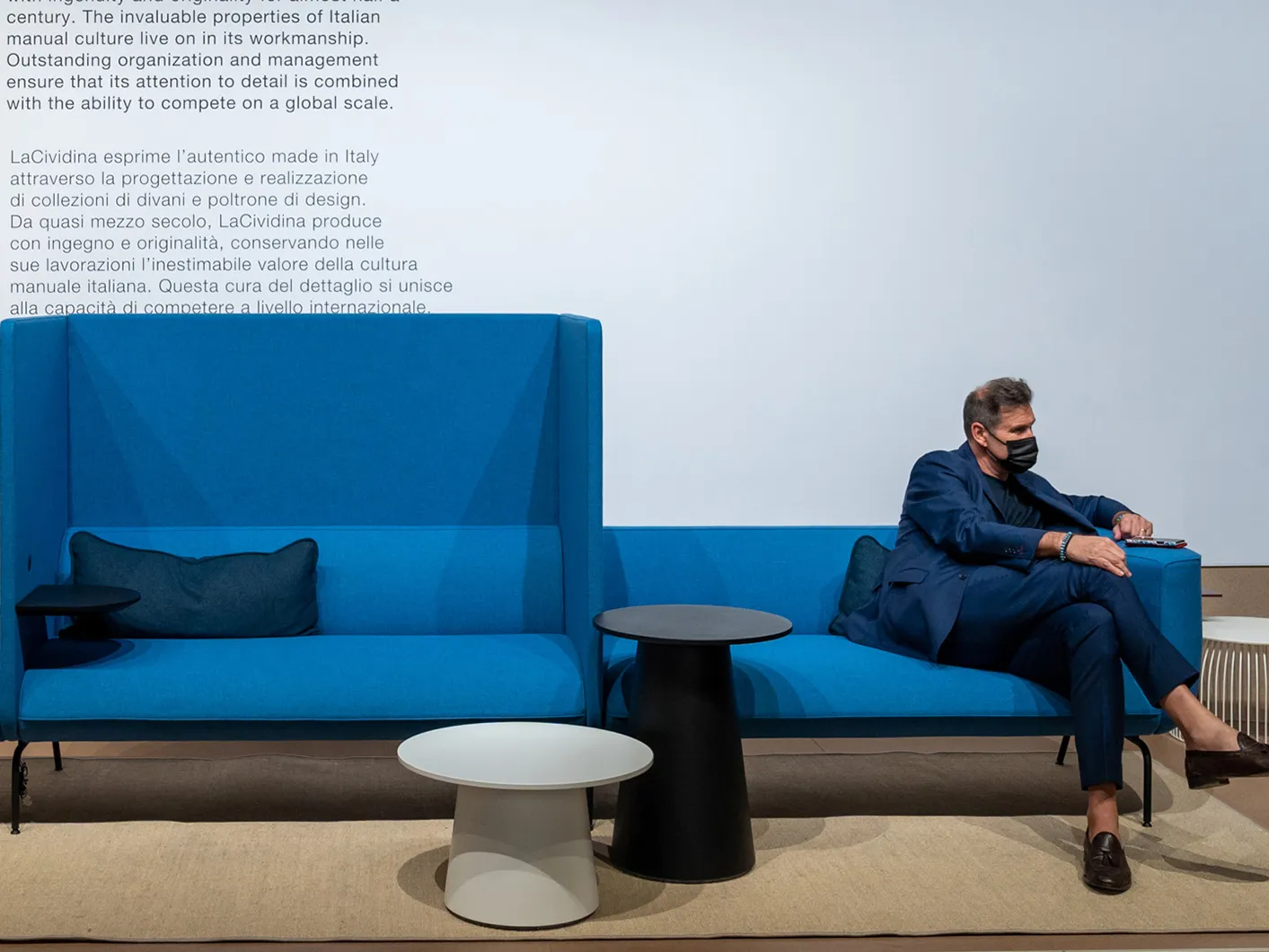In partnership with MiCodmc, a selection of establishments ripe for discovery during the 63rd edition of the Salone del Mobile.Milano, from 8th to 13th April

Ph. credits Tanja Viganò
The new frontiers of comfort in offices, public spaces and waiting areas, with modular systems, colours and design alcoves.
What with the increasingly reduced spaces in the cities, digital life and the frenzy of the recovery, there’s even greater need to think about comfort in the round, an everyday quality that needs to be valorised, even in the spaces where “efficiency” is uppermost. The furnishing companies well know how important it is that the most functional and technical places – offices, waiting rooms, airport lounges and museum, hotel and library atriums – be able to put their patrons at ease, with dedicated relaxation areas, or larger interior design interventions that help to break the ice and generate more relaxing situations, both at work and in our private lives. Many of the proposals at “supersalone” focused on the need to render spaces comfortable and informal, without skimping on elegance and artisan quality. It is precisely this vision that has sparked upholstered islands without backrests, long benches that can be put together and taken apart at will, making for original colour combinations and even cosy alcoves that mean never having to sacrifice moments of privacy. All ripe for discovery in the new collections.
Ron Gilad’s stand for Molteni&C (Pav 02, Stand A 23) celebrated imagination, travel and, especially, comfort: with a set of Round D.154.5 armchairs (designed by Gio Ponti in 1954 and re-edited this year) on which visitors could sit and gaze out of the portholes onto the landscape. An unexpected display, illustrating one of the myriad potential uses for this iconic piece of furniture, equally suitable for living rooms and for collective spaces.

Molteni&Co, Ph. credits Tanja Viganò
The Gala sofa, designed by Cristina Celestino for Saba (Pav 04, Stand E 02), was devised to slot easily into all kinds of interiors, from residential settings to hospitality. The vertical angle of the backrest makes for an ideal pairing with pouffes and chairs of various depths to create easily configured flexible islands, characterising the space with its presence and becoming a furnishing piece that makes for easy interface but also allows for some degree of privacy, thanks to its central backbone.
The Couchette seating system, designed by Lucidi Pevere for LaCividina (Pav 02, Stand L 10) can be used to create complex, flexible islands that respond to a diverse range of needs, while the brand’s “Node+ - designed by Ben van Berkel / UNstudio – pushes the formal translation of this concept even further. The former was inspired by the couchettes on sleepers and was conceived to create a chain of united yet individually isolated spaces, thanks to the possible combination of 38 elements, including padded sound-absorbent panels and other accessories such as small tables, USB/electric sockets and coat hooks. The latter, Node+, can be turned into a temporary and, if necessary, silent workspace: the collection includes padded elements, backrests, dividing walls and accessories for configuring solutions for work and play, privacy and socialisation - all at the same time.

LaCividina, Ph. credits Tanja Viganò
The Sys range also gives free rein to combinations ideally suited to use in settings such as waiting rooms, workspaces, museums, restaurants, schools, shops and meeting and collective areas. A quick and intuitive fastening system – devised by the studio mC.dsg for Infiniti (Pav 03, Stand F 18) – makes the sofa easy to dismantle, move and reconfigure, from long linear solutions along walls in multicoloured squares like large pouffes, to more complicated forms more suited to bolder design concepts. Again, a range of accessories such as small tables, armrests and electric sockets complete the range.

Infiniti, Ph. credits Tanja Viganò
A space dedicated to the office in which the needs for privacy, interface, work and relaxation intersect more conspicuously was showcased by the Milanese company Cuf (Pav 03, Stand F 26) at “supersalone” with a lengthy revisiting of the modular Fusion system designed by J. Bennett and S. Adachi.


 Exhibitions
Exhibitions














